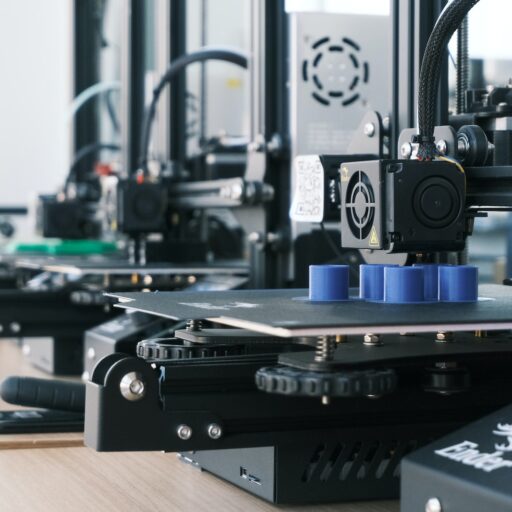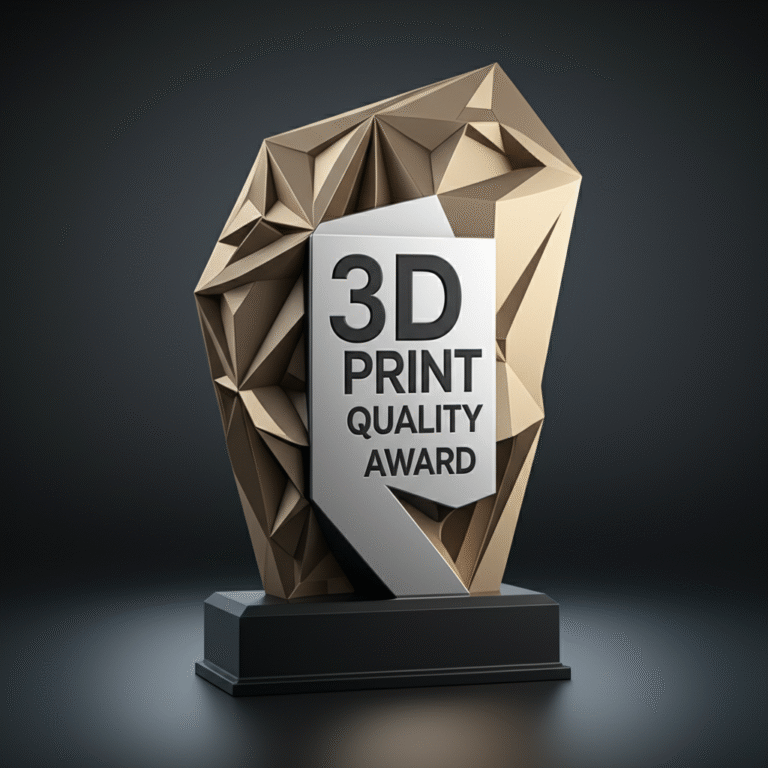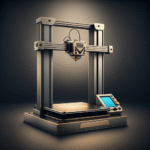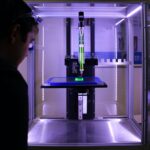Support our educational content for free when you purchase through links on our site. Learn more
How Much Does a High-Quality 3D Printer Cost in 2025? 🤔 7 Key Factors That Determine the Price!
Have you ever wondered why some 3D printers cost a few hundred dollars while others can set you back tens of thousands? 🤯 As the 3D printing industry continues to evolve, understanding the pricing landscape is crucial for anyone looking to dive into this exciting technology. In this article, we’ll explore the various factors influencing the cost of high-quality 3D printers, from the type of technology used to the materials required. Whether you’re a hobbyist, a small business owner, or a professional designer, knowing what to expect can help you make an informed decision.
Imagine this: you’re ready to unleash your creativity, but you’re stuck between a budget-friendly model and a high-end machine that promises exceptional quality. Which one should you choose? We’ll break down the pros and cons of each option and help you find the perfect fit for your needs. By the end of this article, you’ll have a clearer understanding of how much you should invest in a 3D printer and what features to prioritize.
Key Takeaways
- Diverse Price Ranges: High-quality 3D printers can range from a few hundred to over $100,000, depending on features and capabilities.
- Key Influencing Factors: Technology type, build volume, print quality, and brand reputation significantly affect pricing.
- Material Costs Matter: The choice of materials can impact your overall expenses, so consider ongoing costs when budgeting.
- Hidden Expenses: Don’t forget about maintenance, post-processing, and electricity costs that can add up over time.
- Choosing Wisely: Assess your needs and budget to find the right printer for you—whether it’s a budget model or a professional-grade machine.
Ready to explore the world of 3D printing? Check out our Best 3D Printer recommendations to get started!
Table of Contents
- Quick Tips and Facts
- Understanding 3D Printer Pricing: What You Need to Know
- Factors That Influence the Cost of High-Quality 3D Printers
- Types of 3D Printers and Their Price Ranges
- The Cost of 3D Printing Materials: What to Expect
- Searching for a Professional 3D Printer? Here’s What to Look For!
- The Hidden Costs of Owning a 3D Printer
- How to Choose the Right 3D Printer for Your Budget
- Comparing Budget vs. High-End 3D Printers: Is It Worth It?
- Real User Experiences: What People Say About Their 3D Printers
- Conclusion
- Recommended Links
- FAQ
- Reference Links
Quick Tips and Facts
- 3D Printer Costs Vary Widely: Expect to pay anywhere from a few hundred to tens of thousands of dollars depending on the type and capabilities of the printer.
- Material Matters: The cost of materials can significantly impact your overall expenses. For example, FDM filaments are generally cheaper than resin for SLA printers.
- Consider Hidden Costs: Maintenance, post-processing, and operational costs can add up, so factor these into your budget.
- Purpose-Driven Choices: Whether you’re a hobbyist or a professional, your intended use will guide your printer selection and budget.
- Research Brands: Established brands like Prusa, Creality, and Formlabs offer a range of options catering to different needs and budgets.
Understanding 3D Printer Pricing: What You Need to Know
When diving into the world of 3D printing, one of the first questions you might ask is, “How much does a high-quality 3D printer cost?” The answer isn’t straightforward, as prices can range dramatically based on various factors.
Key Takeaways:
- Entry-Level Printers: Generally priced between $200 and $500, these are perfect for beginners or hobbyists.
- Mid-Range Printers: Expect to spend between $1,500 and $5,000 for more advanced features and capabilities.
- Professional and Industrial Printers: These can set you back anywhere from $20,000 to over $100,000, depending on their specifications and intended use.
For a deeper understanding, check out our 3D Printer Reviews.
Factors That Influence the Cost of High-Quality 3D Printers
Several factors come into play when determining the price of a 3D printer. Let’s break these down:
| Factor | Description |
|---|---|
| Technology | FDM, SLA, SLS, and more each have different price points and capabilities. |
| Build Volume | Larger printers generally cost more due to their size and material requirements. |
| Material Compatibility | Some printers can only use specific materials, affecting overall costs. |
| Print Quality | Higher precision and resolution typically come with a higher price tag. |
| Brand Reputation | Established brands may charge more due to reliability and customer support. |
Additional Insights:
- FDM Printers: Generally the most affordable, with prices starting around $200 for DIY kits. Professional models can reach $8,000 or more.
- SLA Printers: Known for high detail and smooth finishes, these start around $500 and can go up to $25,000 for industrial models.
- SLS Printers: These are on the higher end, starting from $30,000 and can exceed $200,000 for full industrial setups.
Types of 3D Printers and Their Price Ranges
Here’s a quick overview of different 3D printer types and their typical price ranges:
| Printer Type | Price Range | Best For |
|---|---|---|
| FDM | $200 – $20,000 | Prototyping, hobbyists |
| SLA | $500 – $25,000 | High-detail models, jewelry, dental |
| SLS | $30,000 – $200,000 | Complex geometries, functional parts |
| DMLS | $100,000 – $1,000,000 | Aerospace, automotive, medical applications |
Why Choose One Over the Other?
- FDM is great for beginners and those looking for budget-friendly options.
- SLA offers superior detail, making it ideal for intricate designs.
- SLS is perfect for producing strong, functional parts without the need for support structures.
The Cost of 3D Printing Materials: What to Expect
The cost of materials can significantly affect your overall 3D printing expenses. Here’s a breakdown of common materials and their costs:
| Material Type | Cost per kg | Notes |
|---|---|---|
| PLA | $20 – $30 | Easy to use, biodegradable, great for beginners. |
| ABS | $20 – $50 | Strong, heat-resistant, ideal for functional parts. |
| Resin | $50 – $250 | High detail, used in SLA printers, more expensive. |
| Nylon | $50 – $150 | Durable and flexible, used in SLS printers. |
| Metal Powders | $100 – $1,000+ | Used in DMLS, very expensive but high-performance. |
Tips for Material Selection:
- Choose Wisely: Select materials based on your project needs. For example, if you need flexibility, go for nylon.
- Buy in Bulk: If you’re planning to print a lot, purchasing materials in bulk can save you money.
Searching for a Professional 3D Printer? Here’s What to Look For!
When you’re on the hunt for a professional-grade 3D printer, keep these features in mind:
Essential Features:
- Print Quality: Look for printers with a high resolution (measured in microns).
- Build Volume: Ensure the printer can accommodate the size of your projects.
- Material Compatibility: Check if the printer supports the materials you plan to use.
- Ease of Use: User-friendly interfaces and software can save you time and frustration.
- Support and Warranty: Reliable customer support and a good warranty can save you headaches down the line.
Recommended Brands:
- Formlabs: Known for high-quality SLA printers, ideal for professionals.
- Prusa: Offers reliable FDM printers with excellent community support.
- Ultimaker: Great for professional applications with a focus on ease of use.
The Hidden Costs of Owning a 3D Printer
Owning a 3D printer isn’t just about the initial purchase price. Here are some hidden costs you should consider:
- Maintenance: Regular upkeep can range from $200 to $1,000+ annually depending on the printer type.
- Post-Processing: This includes cleaning, sanding, and finishing your prints, which can add time and costs.
- Electricity Costs: Running a printer can add to your electricity bill, especially for larger models.
- Software: Some advanced software for slicing and modeling can come with a price tag.
Pro Tip:
Budget for these hidden costs to avoid surprises later. A good rule of thumb is to set aside 20% of your printer’s cost annually for maintenance and materials.
How to Choose the Right 3D Printer for Your Budget
Choosing the right 3D printer can feel overwhelming, but we’ve got your back! Here’s a step-by-step guide to help you make the right choice:
- Define Your Purpose: Are you printing for fun, prototyping, or professional use?
- Set a Budget: Determine how much you’re willing to spend, including hidden costs.
- Research: Look into different brands and models. Check out our Beginner’s Guide to 3D Printing for more insights.
- Compare Features: Make a list of must-have features and compare them across models.
- Read Reviews: User feedback can provide valuable insights into performance and reliability.
- Test Before You Buy: If possible, try out a printer at a local maker space or shop.
Final Thoughts:
Don’t rush your decision! Take your time to research and find the perfect printer that fits your needs and budget.
Comparing Budget vs. High-End 3D Printers: Is It Worth It?
When it comes to 3D printers, you often get what you pay for. Here’s a comparison of budget versus high-end printers:
| Aspect | Budget Printers | High-End Printers |
|---|---|---|
| Price | $200 – $1,500 | $1,500 – $100,000+ |
| Print Quality | Good for basic models | Exceptional detail and finish |
| Material Options | Limited to common filaments | Wide range, including metals and resins |
| Ease of Use | May require more setup and tweaking | Generally user-friendly |
| Support | Limited community support | Strong manufacturer support |
Is It Worth It?
If you’re serious about 3D printing and plan to use it frequently for professional applications, investing in a high-end printer can save you time and frustration in the long run. However, if you’re just starting or printing for fun, a budget printer can be a great way to dip your toes into the water.
Real User Experiences: What People Say About Their 3D Printers
We’ve gathered some real user experiences to give you a sense of what to expect:
- John, Hobbyist: “I started with a Creality Ender 3, and it’s been a fantastic entry point. The community support is amazing, and I’ve learned so much!”
- Sarah, Designer: “I upgraded to a Formlabs Form 3 for my jewelry designs. The detail is incredible, and it’s worth every penny for my business.”
- Mike, Engineer: “I use an Ultimaker S5 for prototyping. The ease of use and reliability have made it an essential tool in my workflow.”
What Can We Learn?
User experiences highlight the importance of matching your printer to your needs. Whether you’re a hobbyist or a professional, there’s a printer out there that’s perfect for you!
Conclusion

Choosing a high-quality 3D printer involves understanding the various factors that influence pricing, from technology and materials to hidden costs. Whether you’re a hobbyist or a professional, there’s a printer that fits your needs and budget. Remember to do your research, read reviews, and consider what you’ll be printing before making a decision.
For more insights and detailed reviews, check out our 3D Printer Brands section!
Recommended Links
FAQ

Q: What is the average cost of a 3D printer?
A: The average cost can vary widely, but entry-level printers typically start around $200, while professional models can exceed $20,000.
Q: Are there ongoing costs associated with 3D printing?
A: Yes, consider material costs, maintenance, and post-processing expenses when budgeting.
Q: Can I make money with a 3D printer?
A: Absolutely! Many users turn their passion into profit by offering printing services or selling their creations.
Reference Links
Conclusion

In the vast world of 3D printing, understanding how much a high-quality 3D printer costs and what factors influence that price is essential for making an informed decision. We’ve explored everything from entry-level options to professional-grade machines, highlighting the importance of features, material compatibility, and hidden costs.
Summary of Positives and Negatives
Positives:
- Diverse Options: There’s a 3D printer for every budget and need, whether you’re a hobbyist or a professional.
- Technological Advancements: High-end printers offer exceptional print quality, speed, and material versatility.
- Community Support: Established brands often come with extensive user communities, providing valuable resources and troubleshooting help.
Negatives:
- Initial Investment: High-quality printers can be expensive, and ongoing costs can add up.
- Complexity: Some advanced printers require a steep learning curve, which can be daunting for beginners.
- Maintenance Needs: Regular upkeep is necessary to ensure optimal performance, which can be an additional hassle.
Confident Recommendation
If you’re serious about 3D printing and plan to use it frequently, investing in a high-quality printer is worth it. Brands like Formlabs and Prusa consistently receive high marks for their reliability and print quality. However, if you’re just starting or primarily printing for fun, a budget-friendly option like the Creality Ender 3 can still deliver fantastic results without breaking the bank.
Now that you’re equipped with all this knowledge, it’s time to take the plunge and find the perfect 3D printer for your needs!
Recommended Links
- 👉 Shop Formlabs on: Amazon | Formlabs Official
- 👉 Shop Prusa on: Amazon | Prusa Official
- 👉 Shop Creality on: Amazon | Creality Official
- Explore 3D Printing Books on Amazon: 3D Printing Books
FAQ

What features should I look for in a high-end 3D printer to ensure it meets my needs and justifies the cost?
Key Features to Consider:
- Print Quality: Look for printers with a high resolution (measured in microns) for detailed outputs.
- Build Volume: Ensure the printer can accommodate the size of your projects.
- Material Compatibility: Check if the printer supports a wide range of materials, including specialty filaments and resins.
- Ease of Use: User-friendly interfaces and software can save you time and frustration.
- Support and Warranty: Reliable customer support and a good warranty can save you headaches down the line.
Are expensive 3D printers worth the investment for hobbyists, or are more affordable options sufficient for personal projects?
Investment Justification:
Expensive 3D printers often come with advanced features, higher print quality, and better reliability. For hobbyists who plan to print frequently or require precision for detailed projects, investing in a high-quality printer can be worthwhile. However, if your projects are casual or infrequent, a more affordable option can still meet your needs without the hefty price tag.
How do the prices of 3D printers from well-known brands compare to those of lesser-known manufacturers offering similar features and quality?
Brand Comparison Insights:
Well-known brands typically offer better customer support, reliability, and community resources. While lesser-known manufacturers may provide similar features at a lower price, they often lack the same level of quality assurance and support. It’s crucial to weigh the risks and benefits when considering a lesser-known brand.
What are the key differences between award-winning 3D printers and more budget-friendly options, and how do they impact the overall printing experience?
Differences Explained:
Award-winning 3D printers often feature superior engineering, better materials, and advanced technology, resulting in higher print quality and reliability. Budget-friendly options may compromise on these aspects, leading to lower print quality, more frequent maintenance, and a steeper learning curve. Ultimately, the choice depends on your specific needs and how much you value print quality and reliability.
What are the ongoing costs associated with owning a 3D printer, and how can I budget for them effectively?
Ongoing Cost Considerations:
- Material Costs: Regularly factor in the cost of filaments or resins, which can vary widely.
- Maintenance: Set aside a budget for routine maintenance and potential repairs.
- Electricity: Consider the energy consumption of your printer, especially for larger models.
- Post-Processing: Budget for any additional materials or tools needed for finishing your prints.
By planning for these ongoing costs, you can ensure that your 3D printing hobby or business remains sustainable.





